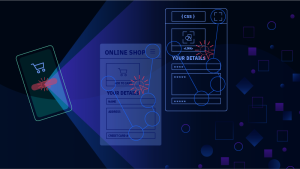When we speak with customers, we’re often asked questions about the pros and cons of monitoring of real users vs. synthetic transactions and whether one approach should be used over the other. The truth is both approaches are relevant and they complement each other.
However, there has been some chatter about synthetic monitoring no longer being relevant or needed. We disagree.
Synthetic monitoring is an essential approach used to attain mature APM capabilities that provide broad end-user experience visibility and deep-dive diagnostic capabilities.
Synthetic monitoring can be used to establish a baseline performance level before an application goes live on a production website or other deployment infrastructure. Having deep-dive diagnostic capabilities is required to be able to rapidly identify the root cause of an issue and resolve it. Synthetic monitoring provides a rich set of diagnostic data you need to debug problems.
With synthetic monitoring you can troubleshoot with accuracy using detailed object-level, page, connection and host data across multiple browsers. It provides detailed diagnostics including DNS, connect time, SSL, first byte and content download times and errors, for every object on every page, and stored for postmortem and routine review. Running synthetic tests from end-user computers — the last mile — allows troubleshooting of ISPs and uncovering peering issues with regional ISPs.
To provide rich customer experiences, web applications and sites increasingly depend on third-party components such as shopping carts, ads, customer reviews, web analytics, social networking, search engine optimization, video and many more.
These components help drive traffic, increase conversions and improve customer satisfaction, but any one component could weaken your site’s overall performance or even take it down. Synthetic monitoring you can quickly isolate a problem to a specific third-party component and troubleshoot with detailed diagnostics.
Real-user monitoring is also important because it measures the experience of actual end users. Real-user monitoring complements synthetic monitoring, providing insights into how the data observed with synthetic monitoring impacts your real end users; for example, user satisfaction and conversion rates.
In addition, real-user monitoring measures all aspects of your users’ experiences, including user location, browser, ISP, device and all application infrastructure components. With real-user monitoring, you can quantify performance problems by business impact for rapid isolation and resolution.
Knowing how an application can break or slow down when something is incorrectly done is just as important as knowing how it handles when things go right. It’s not real-user vs. synthetic monitoring, but real-user and synthetic monitoring.
Want to know more about why synthetic monitoring is needed, read “How emulating user paths improves outcomes”.





Looking for answers?
Start a new discussion or ask for help in our Q&A forum.
Go to forum